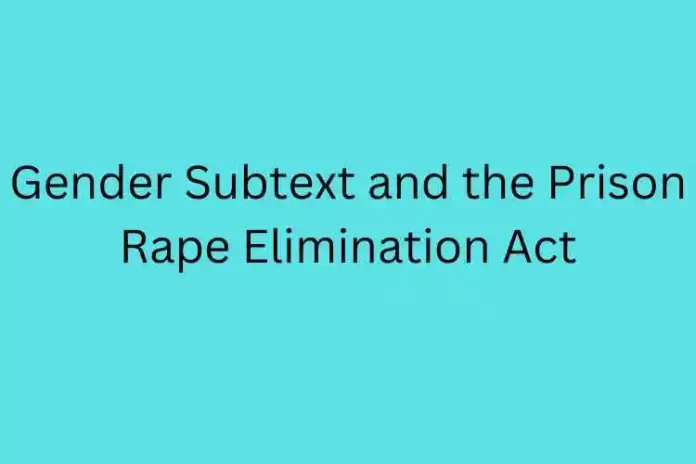Gender Subtext and the Prison Rape Elimination Act explain the gender-neutral policy between women’s and men’s prisons. This act was passed by both parties of Congress in 2003, whose purpose was to provide for the analysis of the incidence and effects of prison rape and to protect individuals from prison rape. It explains the ways in which the arrangements in prison contribute to the implementation, functioning, and further consequences. If you want to know more about this act, then keep reading till the end; we have mentioned all the required information over here.
Details of the Prison Rape Elimination Act
Gender subtext is something that shapes the way the Prison Rape Elimination Act is implemented. The main objective of this act was to provide for the analysis of the incidence of prison rape in federal, local, and state institutions and provide them with information, funding, suggestions, and resources to shield people from rape in prison. Apart from just taking a mandate for research, PREA funding through the Bureau of Justice Statistics and the National Institute of Justice has supported major efforts in many state correctional, community correctional, and jail systems. The National Prison Rape Elimination Commission, tasked with developing guidelines for ending prison rape, was established as a result of PREA.
The standards for eliminating prison rape were actually published by the National Prison Rape Elimination Commission in June 2009, which was further turned over to the Department of Justice as the final rule. The Department of Justice published the final PREA standards in June 2012, effective August 20, 2012. In 2010, the Bureau of Justice Assistance also funded PREA to continue to provide federally funded training and technical assistance. This training and technical assistance are provided to states and localities to serve as a single-stop resource for research in the field working to come into compliance with federal standards.
Also Read : – Brad Williams Wife Height, Weight, Age, Kids, Net Worth and many more
Reasons for Gender Subtext and the Prison Rape Elimination Act
In the year 1996, a young Texas man named Rodney Hulin Jr. committed suicide due to multiple sexual assaults. This incident spurred Congress to pass the Prison Rape Elimination Act in 2003 to address sexual violence behind bars. The first nation’s civil law addresses and is responsible for the collection of data on the problem of prisoner rape and federal grants to help states combat within prisons, youth facilities, police lockups, immigration detention facilities, and community corrections.
Benefits of the Prison Rape Elimination Act
Before the time when PREA was implemented, there were various damaging results for multiracial people, women, and disabled people; hence, PREA was developed with good intentions in concert with the prisoner’s rights across the country. It was implemented to protect all prisoners, especially women, transgender people, people of colour, and disabled people, from being harassed, and if any such thing happens, there are various enforced penalties against those prisoners.
Conclusion
The standards for eliminating prison rape were actually published by the National Prison Rape Elimination Commission in June 2009, which was further turned over to the Department of Justice as the final rule. The Department of Justice published the final PREA standards in June 2012, effective August 20, 2012. In 2010, the Bureau of Justice Assistance also funded PREA to continue to provide federally funded training and technical assistance.
FAQs
<strong>What is PREA form?</strong>
Use this form to report an incident or incidents of suspected sexual abuse or harassment by a Judicial Branch employee, contractor, volunteer, intern, or someone in the Judicial Branch’s custody against a person in the Judicial Branch.
<strong>What is a PREA investigation?</strong>
After reviewing all claims, the Coordinator or designee under the Prison Rape Elimination Act (PREA) will decide which ones qualify as sexual misconduct and transmit those claims to the relevant Appointing Authority for further inquiry.
<strong>Does PREA apply to local jails?</strong>
A federal statute known as the Prison Rape Elimination Act (PREA) of 2003 was created to target the eradication and prevention of rape and sexual assault within correctional facilities. All federal, state, and municipal prisons are covered by PREA. prisons.
<strong>What are the three phases of a PREA audit?</strong>
The four stages of the PREA audit process—pre-onsite, onsite, evidence review and interim report, and corrective action and final report—are helpfully represented visually by the Process Map.


